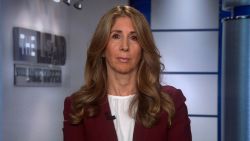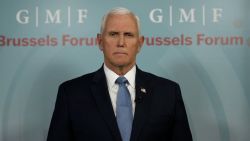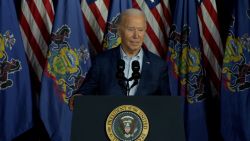Once considered a crucial safety net in the pandemic-fueled economic storm, enhanced unemployment benefits are now pitting the jobless who say they are still struggling to find work against businesses who argue they are now struggling to find employees.
There are plenty of anecdotal examples to back up each side. But just what is happening in the labor market – and the effect of the contentious $300 weekly federal boost extended by Congress in the most recent March stimulus package – remains unclear.
About half of economists say they are uncertain whether the supplement is a major disincentive for lower-wage workers, according to a survey published last week by the Initiative on Global Markets at the University of Chicago’s Booth School of Business. Some 28% believe that it is, while 16% feel it is not.
More on Covid-19 relief
“My guess is the $300 is having some discouraging effect on people working, but that it’s not a gigantic effect. But I have a lot of uncertainty because I just don’t think we have good data,” said Joseph Vavra, an economics professor at the University of Chicago, who researched the impact of the $600 weekly enhancement Congress approved at the start of the pandemic last year, when millions were suddenly laid off amid widespread business shutdowns.
Are you at risk of losing your benefits early? Tell us about it here.
Most Republican governors are not waiting to find out. At least 25 have announced they are terminating one or more of the pandemic unemployment programs early, citing labor shortages in their states. Some 4.5 million people will be affected, and recipients will starting losing their benefits as soon as June 12.
The $300 boost, as well as two other pandemic programs that provide benefits to independent contractors and others who don’t typically qualify and to those who’ve run out of their regular state benefits, is scheduled to last until early September in the states that are continuing the programs.
What is known is that the extra federal payment means that some people are making more on unemployment than they did at their jobs. Estimates range from about 25% to around 40% of laid-off workers being in this situation.
What the jobless say
Out-of-work Americans point to a multitude of factors that are keeping them from returning to the labor market. But until they land a job, they say they need the $300 weekly cushion to stay afloat financially.
Though there were a record-high 8.1 million job openings, as of March, some workers say many of these positions pay too little or are too far away for them to afford to accept or that the postings require skills or certifications they don’t have.
Others have applied to scores of listings but are either not getting interviews or receiving offers. The economy is still down 8.2 million jobs versus February 2020.
And still others continue to have difficulty securing full-time childcare because their providers may have shuttered or limited enrollment or because their kids are still attending school remotely.
Nearly 7.3 million adults say they are not working because they are caring for children who are not in school or daycare, according to the most recent Census survey data from mid- to late May. That figure has increased from the second half of April, when it was 6.8 million.
Plus, the pandemic continues to weigh on some Americans, despite the increase in vaccinations and drop in cases. Some 3.8 million people said they are not working because they are concerned about getting or spreading the virus – which is down from 4.2 million in April, according to the Census Bureau.
What businesses say
Employers, who are eager to staff up as the economy reopens, say that they can’t find enough workers – in part because the generous supplement is keeping people on the sidelines.
“It’s not the reason, but it absolutely is a reason,” said Neil Bradley, chief policy officer at the US Chamber of Commerce, which has called for states to end the pandemic program.
There’s already some early evidence that the looming end to the supplement is having some intended effect, Bradley told CNN. He pointed to a report from Indeed that showed job search activity on the site increased on the day a state announced it would end pandemic benefits early. However, the bump vanished by the eighth day.
The $300 weekly supplement likely had “small but noticeable effects” on job search and worker availability in the first four months of this year, according to a recent study by the Federal Reserve Bank of San Francisco.
About 1 in 7 workers are not taking job offers because of the enhancement, according to study co-author Rob Valletta, associate research director at the San Francisco Fed.
The finding is an extrapolation from earlier research on last year’s $600 boost. But ending the current supplement likely won’t help employers a great deal, Valletta told CNN.
“Removing it is not going to increase employment growth by much,” he said of the $300 enhancement.
Businesses are taking steps to attract more workers. Companies such as Under Armour, Amazon and Walmart have raised their minimum wage to attract workers – and smaller businesses are also offering incentives. One Arizona restaurant owner has offered to pay college tuition for full-time employees who come back to work.
The Chamber on Wednesday called for states to use federal funds to help parents pay for childcare. Arizona announced such a plan last month in conjunction with its ending the $300 federal boost. The state will provide three months of childcare assistance for those earning up to roughly $52,000 annually who return to work after collecting unemployment benefits.


















